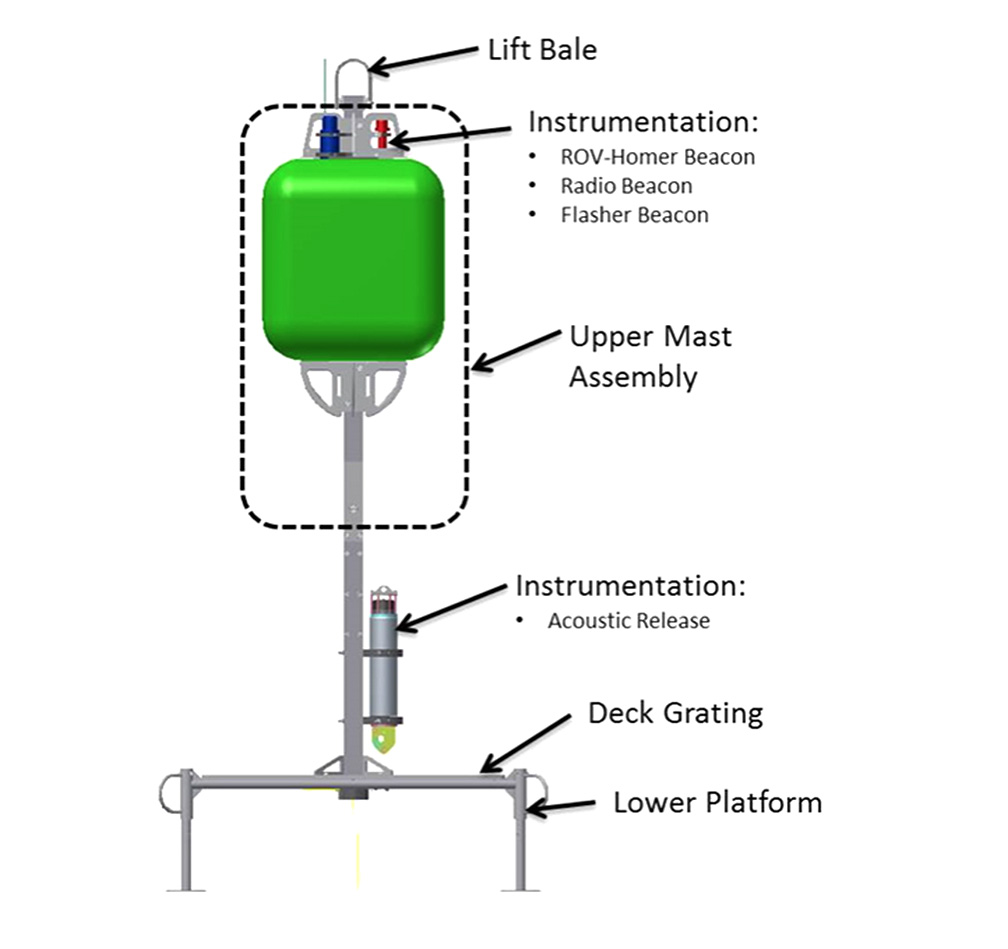Landers are versatile mechanical platforms used for carrying tools, instruments, scientific samples, imagery, measurements, etc. between the surface and the bottom of the sea. Landers usually consist of a metal frame shaped like a large square desk with a perforated top and tall mast in the middle that carries lightweight flotation at its top.
Landers are launched into the ocean with attached ballast weights that allow it to free-fall to the bottom. Depending on the depth, the descent to the seafloor could take up to several hours. At the end of each deployment, the ballast weights are released with a timer or acoustic signal and the lighter-than-water lander then ascends to the surface. Once on the surface, the lander’s antennas and bright color of the flotation foam make it easy to spot and recover the lander.

